Owning a rental property comes with a great deal of responsibility, including ensuring the safety of your tenants. One crucial aspect of this is conducting regular electrical safety checks. In the UK, these checks are not only important for the well-being of those living in the property but are also a legal requirement for landlords.
Understanding the Importance of Electrical Safety Checks
Faulty electrical systems can lead to potentially dangerous and devastating consequences such as fires or electric shocks.
An electrical safety check is designed to identify any potential hazards or non-compliance with electrical regulations, helping to create a safe living environment for tenants.
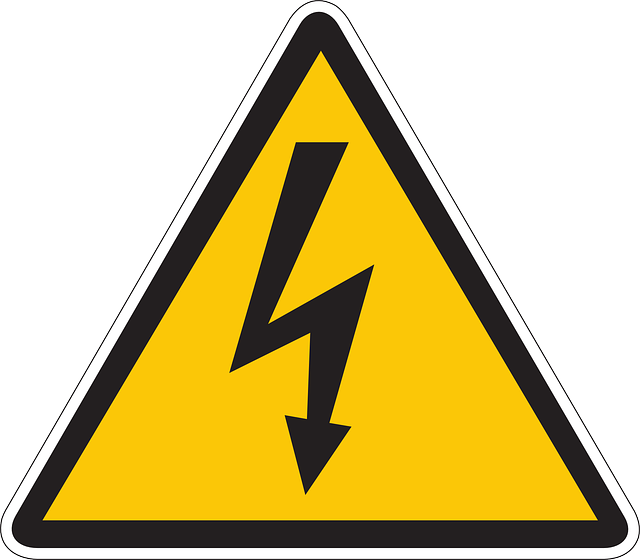
By identifying any electrical faults or issues, landlords can ensure that necessary repairs or replacements take place promptly, reducing the risk of electrical accidents. This proactive approach promotes the well-being of tenants and helps maintain the property’s overall safety standards.
By conducting regular inspections, landlords can identify any electrical issues early on and address them before they escalate into costly repairs or legal liabilities.
Landlord Legal Obligation
In the UK, landlords have a legal obligation to ensure that their rental properties meet specific electrical safety standards. New rules requiring landlords to conduct an electrical safety assessment and file an Electrical Installation Condition Report (EICR) went into effect on June 1st, 2020.
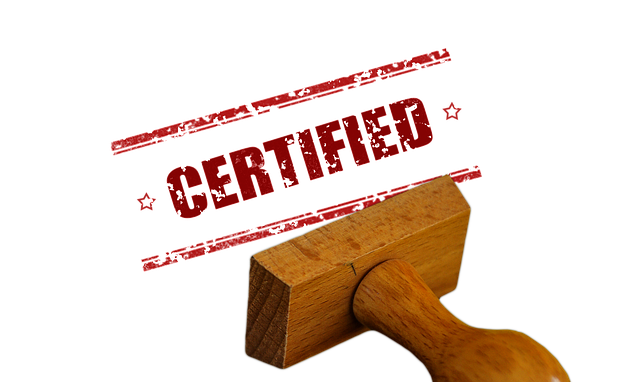
This report must be carried out by a qualified electrician and should be provided to tenants within 28 days of the inspection. Failure to comply with these regulations can result in substantial penalties.
It is essential for landlords to understand the legal requirements surrounding electrical safety checks.
The Process of an Electrical Safety Check
The electrical safety check involves several essential steps to ensure a thorough review of the property’s electrical installations and appliances. Let’s take a closer look at each stage:
Initial Visual Inspection

The first step involves a visual examination of the property’s electrical installations, including wiring, switches, sockets, and consumer units. The inspector will look for obvious signs of damage, wear and tear, or any other issues that could pose a risk. This visual inspection is crucial in identifying any immediate hazards that require attention.
During the initial visual inspection, the electrician will carefully examine the wiring to ensure it is properly insulated and free from any exposed or damaged areas. They will also check the switches and sockets for any signs of overheating or loose connections, which could indicate potential fire hazards.
Additionally, the consumer units will be inspected to ensure they are correctly labelled and have the appropriate protective devices, such as circuit breakers or RCDs.
The inspector will also assess the overall condition of the electrical installations, looking for any signs of aging or deterioration of existing installations. This includes checking electrical fixtures for corrosion, rust, or any other factors that may compromise the safety and functionality of the electrical system.
Testing Electrical Installations
After the initial visual inspection, the electrician will proceed with the inspection and testing of the fixed electrical installations e.g.
- Electric showers
- Extractor fans,
- Light Fittings
- Plug sockets,
- Wiring, and
- Fuse boxes.
During the testing phase, the electrician will perform a series of measurements to assess electrical installation performance. This may include:
- Checking the insulation resistance of the wiring to ensure it is not compromised,
- Measuring the earth loop impedance to verify the effectiveness of the earthing system.
- Testing the RCDs to ensure they trip within the required time limits.
Furthermore, the electrician may also conduct a polarity test to ensure that the live and neutral wires are correctly connected. This is important as incorrect polarity can lead to electrical shocks and potential damage to appliances.
Inspecting Appliances and Outlets
In addition to evaluating the electrical installations, the inspector will inspect the appliances and outlets within the property. This examination ensures that appliances are in good working condition, meet safety standards, and are suitable for the intended use. Any faulty or unsafe appliances will be identified, and recommendations for repair or replacement will be made.
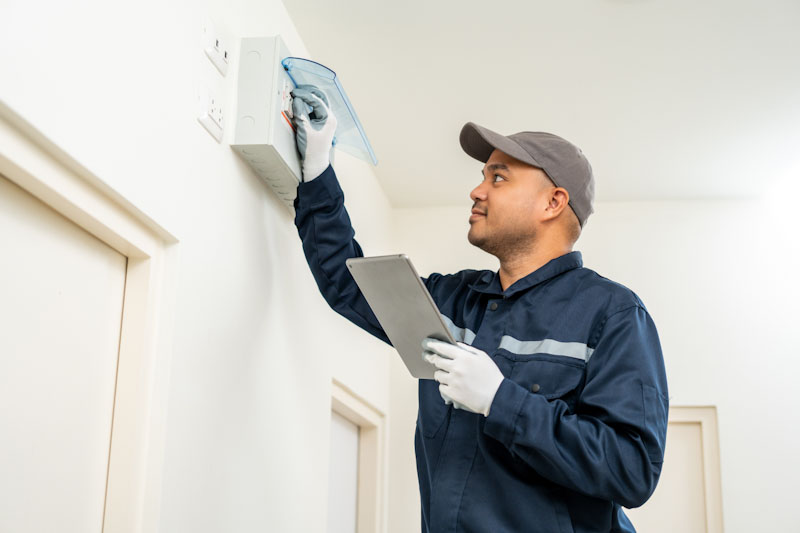
During the inspection of appliances, the electrician will check for any visible signs of damage, such as frayed cords or broken plugs. They will also verify that the appliances have the appropriate safety features, such as thermal cut-offs or grounding. Additionally, the inspector may perform tests to ensure that the appliances are functioning correctly and not drawing excessive current, which could indicate a potential electrical issue.
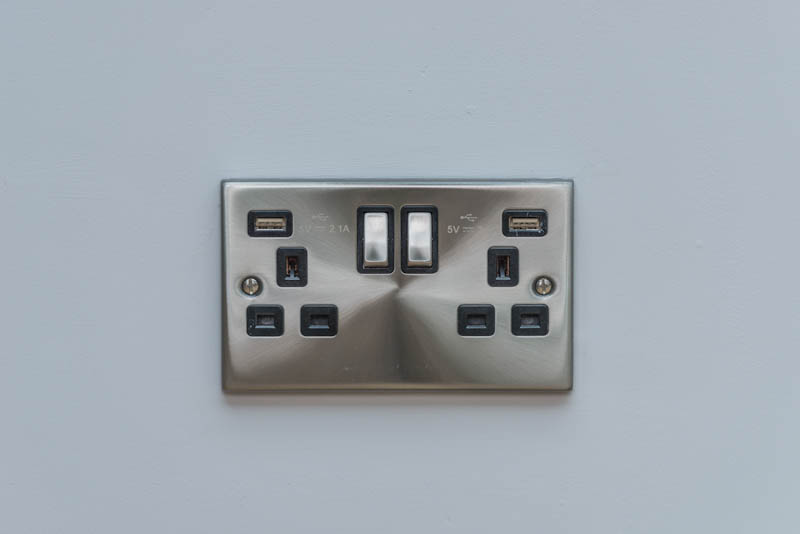
The electrician will inspect the outlets to ensure they are properly grounded and have the correct voltage rating. They will also check for any loose connections or signs of overheating, which could indicate a potential fire hazard. If any issues are found, the electrician will provide recommendations for repairs or replacements to ensure the safety of the occupants.
Components of a Comprehensive Electrical Safety Report
Following the inspection, the electrician will provide you with a comprehensive electrical safety report. This report contains essential information regarding the condition of the property’s electrical systems, recommendations for improvements, and a certification of compliance.
Details of the Property and Inspector
The electrical safety report will include detailed information about the property, including its address, inspection date, and the name and qualifications of the inspector. This ensures transparency and provides a reference for future inspections or inquiries.
Additionally, the report may include a brief description of the property, such as its size, type of construction, and any unique electrical features. This information helps provide context for the inspection findings and recommendations.
The qualifications of the inspector are crucial as they demonstrate their expertise in electrical safety. The report may include details about the inspector’s certifications, licenses, and years of experience in the field. This information gives you confidence in the inspector’s ability to assess the electrical systems accurately.
Observations and Recommendations
One crucial section of the report consists of observations made during the inspection and recommendations for any necessary improvements. This includes any identified faults, non-compliance issues, or potential risks to the property’s electrical installations.
The report will provide a detailed description of each observation, including the location of the issue and its severity. For example, if there is a faulty electrical outlet in the living room, the report may describe the specific problem, such as loose wiring or signs of overheating.
In addition to identifying problems, the report will offer recommendations for remedial action. These recommendations may include repairing or replacing faulty components, upgrading outdated electrical systems, or implementing safety measures to prevent future problems.
The report may also include suggestions for preventative measures to enhance electrical safety. These suggestions could involve installing surge protectors, adding ground fault circuit interrupters (GFCIs) in wet areas, or improving the overall electrical system’s capacity to handle modern appliances and devices.
Certification of Compliance
The final component of the report is the certification of compliance. This certificate serves as proof that the property has undergone a thorough, electrical inspection and safety check and meets the required standards.
The certification will include the date of the inspection and the duration of its validity. It may also include the specific standards or regulations that the property complies with, such as the National Electrical Code (NEC) or local building codes.
It is essential to keep this certification as part of your record and provide a copy to your tenants. This document demonstrates your commitment to maintaining a safe living or working environment and can be useful for insurance purposes or future property transactions.
The Frequency of Electrical Safety Checks
Now that you understand the process and components of an electrical safety check, it is important to consider the frequency with which these checks should be carried out.
Electrical safety checks are a critical aspect of maintaining a safe and functional electrical system. These checks help identify potential hazards, ensure compliance with safety regulations, and prevent electrical accidents. While the initial information provided mentioned regular scheduled checks and checks at the change of tenancy, there are other instances where electrical safety checks are necessary.
Regular Scheduled Checks
Regular inspections are essential to ensure ongoing compliance and safety. These checks should be conducted at regular intervals to identify any deterioration or wear and tear over time. The recommended frequency for these regular checks is every five years, or sooner if advised by a qualified electrician.
Checks at Change of Tenancy
Whenever there is a change of tenancy, it is crucial to conduct electrical safety checks. This ensures that the electrical systems are in a safe condition for new tenants. A thorough check before new occupants move in provides peace of mind for both the landlord and the tenant.
Additionally, electrical safety checks at the change of tenancy provide an opportunity to address any specific concerns or requirements of the new occupants. For example, if a tenant requires additional outlets or wants to install specific electrical appliances, these checks can help determine the feasibility and safety of such modifications.
Dealing with Electrical Safety Non-Compliance
Ensuring electrical safety in rental properties is of utmost importance for both landlords and tenants. Failure to comply with electrical safety regulations can result in severe penalties for landlords, potentially impacting their reputation and finances. The local authority holds the power to issue fines of up to £30,000 for non-compliance with electrical safety standards. These penalties are in place to enforce the importance of maintaining safe living conditions for tenants.
Potential Penalties for Landlords
Non-compliance with electrical safety standards can have serious consequences for landlords. In addition to the hefty fines imposed by the local authority, landlords may also face legal action from tenants if they suffer injury or damage to rented properties due to electrical hazards. This can lead to costly legal battles and further damage to the landlord’s reputation.
Furthermore, failure to comply with electrical safety regulations can result in the local authority taking enforcement action. This may include serving improvement notices, which require landlords to rectify any electrical safety issues within a specified timeframe. Failure to comply with improvement notices can lead to a further investigation, legal action and potentially even the prohibition of renting out the property.
Rights and Recourses for Tenants
Tenants have the right to live in a safe and hazard-free environment. If they believe that their rental property does not meet the necessary electrical safety standards, it is crucial for them to take action. The first step is to report the issue to their landlord immediately, providing detailed information about the specific electrical hazards or concerns.
While landlords are legally obligated to address and rectify any electrical safety issues, there may be instances where they fail to do so adequately. In such cases, tenants have recourse to seek assistance and guidance from the local authority. The local authority can provide valuable support in assessing the situation, advising tenants on their rights, and guiding them on the necessary steps to ensure their safety.
Communication
It is important for tenants to document any communication with their landlord regarding electrical safety concerns. This includes keeping records of emails, letters, or any other form of correspondence. These records can serve as evidence in case legal action becomes necessary.
Rights & Responsibilities
Additionally, tenants should familiarize themselves with their rights and responsibilities as outlined in the tenancy agreement. This document often includes clauses related to electrical safety and the landlord’s obligations. Understanding these rights can empower tenants to take appropriate action and seek the necessary assistance when needed.
In conclusion, electrical safety non-compliance can have severe consequences for both landlords and tenants. Landlords must prioritize the safety of their tenants by adhering to all electrical safety regulations and promptly addressing any issues that arise. Tenants, on the other hand, should be proactive in reporting any electrical hazards and seeking assistance from the local authority if their concerns are not adequately addressed.
By working together, landlords and tenants can create a safe living environment that meets all necessary electrical safety standards.
Hiring a Qualified Electrician for Safety Checks
Ensuring the safety of your rental property starts with hiring a qualified electrician to conduct electrical safety checks. Here are some key factors to consider:
Necessary Qualifications and Certifications
When choosing an electrician, make sure they hold the necessary qualifications and certifications. Look for individuals who are registered with a qualified and competent person scheme, such as NICEIC, NAPIT, or ELECSA. These organizations provide assurance that the electrician has undergone rigorous training, is up to date with regulations, and can carry out the necessary inspections.
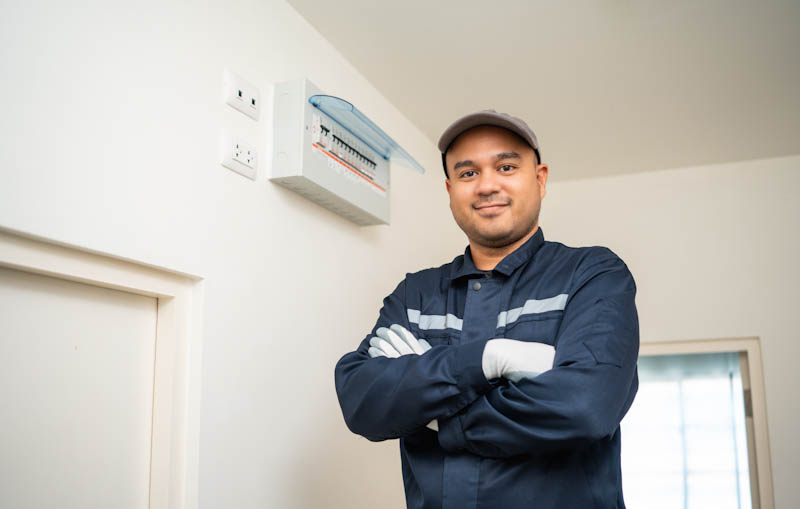
Additionally, it is essential to select an electrician who has experience in conducting electrical safety checks on rental properties. Ask for references or check online reviews to ensure their reliability and expertise. Remember, the safety of your tenants depends on the competence of the electrician you choose.
Electricity Supply
Where an empty property is supplied by a prepayment electric meter, private landlords need to ensure sufficient credit is available.
Electrical Safety Check – To Sum Up
By understanding the importance of electrical safety checks, the required process, and the significance of hiring a qualified electrician, you can ensure that your rental property meets the necessary standards for the well-being of your tenants. Taking proactive steps for electrical safety not only protects those living in your property but also minimizes potential risks and liabilities.
Stay informed, get the electrics checked by a competent electrician, complete remedial work, comply with regulations, and prioritize the safety and satisfaction of your tenants.
Electrical Safety Checks in Norfolk, UK
Brightchecker has a qualified electrician ready to help you in Norfolk, UK!
Drop us an email to arrange your electrical safety check.
support@brightchecker.com
Additional Reading
More Helpful Content
Visit our Homepage
